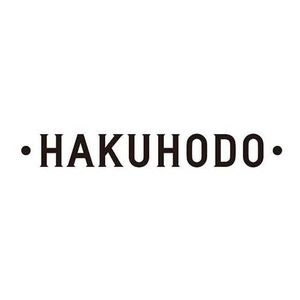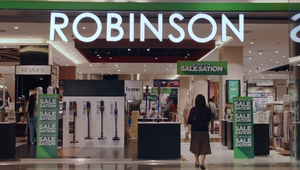
How TBWA\HAKUHODO Shelled Out for Wearable Art

In a groundbreaking effort to combat marine waste and foster environmental sustainability, TBWA\HAKUHODO, in partnership with Koushi Chemical Industry Co., has launched the 'SHELLMET' campaign.
The campaign introduces an eco-friendly helmet, 'SHELLMET,' crafted from discarded scallop shells. Responding to the urgent need to address the 40,000 tons of annual shell waste generated by scallop consumption in Japan, this innovative initiative turns waste into wearable art.
Tom Loudon caught up with the creative minds behind the SHELLMET campaign – including Masatoshi Usami, Hakuhodo creative director, Yuhei Ito, Hakuhodo creative director and senior art director, and Suguru Kato, Hakuhodo PR planner – to explore how they've transformed scallop shells into a versatile and sustainable resource, making waves in recycling and marine conservation.
LBB> The 'SHELLMET' campaign addresses a unique environmental challenge. Could you share how the idea of creating helmets from scallop shells came about and the process of turning this concept into reality?
Masatoshi> Scallops are the most consumed shellfish in Japan, resulting in large amounts of shell waste yearly. Sarufutsu village, which is the leading scallop farm in Japan, has long had a major problem with shells emitted during the processing stage. Until now, Japan relied on exporting shell waste abroad, but in 2021, the exporters of discarded shells withdrew, leaving approximately 40,000 tons of waste abandoned on the Japanese coast.
Experts are concerned not only about securing a place to deposit shells but also about generating toxic odour and soil contamination. To solve this issue, we focused on the main components and structure of scallop shells and took on the challenge of turning scallop shells into a new resource rather than waste. We came up with the concept of “turning shells that protect us from external enemies into something that protects human lives'' and developed the helmet “SHELLMET (Japanese name: Hotamet)'' made from scallop shells.
LBB> Marine waste is a significant concern globally. How did you approach the challenge of transforming surplus scallop shells into a practical and eco-friendly solution like the 'SHELLMET'?
Masatoshi> Our biggest features are "stories" and "manufacturing" that originate from the agency. Rather than just recycling discarded shells, we created a story from a PR perspective that people can intuitively understand and react to, such as “Protect your head and the earth.'' Specifically, SHELLMET is designed so that the more helmets are produced, the fewer discarded shells become a source of soil pollution. We visualised our contribution to the global environment and used it as a trigger to involve society (both individuals and companies).
We have also reflected this story in our manufacturing. SHELLMET is made from pulverised waste shells and 100% recycled material, reducing CO2 emissions by up to 36% compared to new plastic. Furthermore, many products worldwide create new waste in the name of recycling. However, even after this SHELLMET has finished its role, we have created a system that can be crushed and reused as building materials and materials for new SHELLMETs, making it possible to realise a sustainable society.
LBB> The concept of biomimicry played a significant role in the design of the 'SHELLMET'. Could you elaborate on how mimicking the structure of scallop shells contributed to the helmet's durability and effectiveness?
Yuhei> There are many recycled products in the world. We aimed to go beyond simple recycling and develop products with meaning and stories. Therefore, we focused on "Biomimicry", coined from the terms “Bio, which means living things, and “Mimicry'', which means imitation and refers to applying the mechanisms of the natural world and making use of them in technological development. Based on the idea of biomimicry, SHELLMET incorporates a special rib structure into its design that mimics the structure of a scallop shell, which is part of the material. As a result, the optimised helmet shape produced 133% more strength using less material when tested in Von Mises stress tests. The shell-like form is not only beautiful in appearance but also functional in design. The product design was created with the help of Shintaro Kadota of Quantum.
LBB> The 'Shellstic' material, which combines scallop shells and waste plastic, is a pivotal element of the 'SHELLMET'. Can you explain how this material was developed and its role in addressing sustainability concerns?
Yuhei> The trigger was a tweet posted by someone working for a material processing company called KOUSHI. The tweet was about technology to process eggshells to make eco-plastic. So we contacted this person and shared the idea of applying the technology to recycling discarded seashells since both eggshells and seashells are composed of the same component: calcium carbonate. This is how the new material Shellstic was born. Shellstic uses seashells as its raw material, reducing CO2 emissions by up to 36% compared to using 100% new plastic. In addition, the strength (flexural modulus) has also improved by approximately 33%. The material is not only environmentally friendly but also functional.
LBB> Your campaign not only addresses environmental issues but also caters to the needs of the local community. How did you involve the villagers and local partners in the development and implementation of the 'SHELLMET'?
Suguru> Approximately 270 scallop fishermen work in the village raising and catching scallops with great love, but the fishermen feel guilty because the scallop shells produce a large amount of waste that pollutes the sea. What if we could create an ecosystem where the helmets worn by scallop fishermen were made from the shells of the scallops they caught? We promoted this project by sharing this vision with the villagers. In addition, by developing SHELLMET and selling it worldwide as a village speciality, we created a new business in Sarufutsu village, which had been popularly known as the village of scallops.
LBB> The 'SHELLMET' campaign creatively utilises crowdfunding for pre-order sales. How do you anticipate this approach will engage the public and contribute to the campaign's success?
Suguru> The use of crowdfunding is not so much about cost compensation as it is about newsworthiness. It made sense to expose our new product and story in a place where there were already users who could sympathise with and support us. This project is being carried out with an advertising cost of $0. At that time, we made crowdfunding function as an information platform.
LBB> Gen-Z is known for valuing authenticity and sustainability. How did you tailor your messaging to resonate with this demographic and effectively convey the importance of the 'SHELLMET' concept?
Masatoshi> First, we designed an intuitive tagline for the product: “Protect your head and the earth.'' Along with the story that “shells that have protected us from foreign enemies up until now have been reborn as something that protects human lives,'' as mentioned above, the more SHELLMET is produced, the fewer shells are deposited in the ocean. Condensed into one line.
For those who are interested, the product is not only earth-friendly but also has excellent functionality. This is what we are achieving with biomimicry, a concept derived from seashells. We also considered incorporating elements that would make people want to discuss these products. By keeping all elements consistent, from naming to product design and backstory, we were able to develop a product that wasted nothing.
Yuhei> Also, the key visuals that conveyed the story were also very important. By using a beautiful photo of a helmet on the beach as a symbol, we created a design that combines reliability and speed so that Gen Z can receive the product message instantaneously the moment they come in contact with information on their smartphones, etc.
LBB> The campaign introduces the concept of 'Shellstic', a combination of shell-derived material and waste plastic. Can you highlight the environmental impact and benefits of this innovative material?
Masatoshi> This is just the beginning. Since the launch of SHELLMET, we have received offers from over 20 brands. It's not just about SHELLMET, it's also about Shellstic. Plans are currently underway to create a variety of products. For example, inspired by this project, we received an inquiry from Chile, on the other side of Japan, about effectively using discarded mussel shells. Shellstic may also be deployed in fishing communities such as Spain and Italy. This project started with scallop shells, but you can do the same thing with any shell anywhere in the world. We hope that SHELLMET and Shellstic will become an opportunity to protect people's lives and the oceans worldwide.
LBB> Finally, the 'SHELLMET' campaign seems to have broader implications beyond just marine waste reduction. How do you envision this initiative influencing other regions and industries regarding waste recycling and environmental consciousness?
Masatoshi> Not only will SHELLMET be an opportunity to improve environmental awareness, but as mentioned above, we would like to spread our efforts worldwide using Shellstic, which uses all discarded shells, not just scallops, as raw materials.
And, like this project, I would like to create new chemical reactions in various regions and industries by applying the creativity of an agency to social issues.













